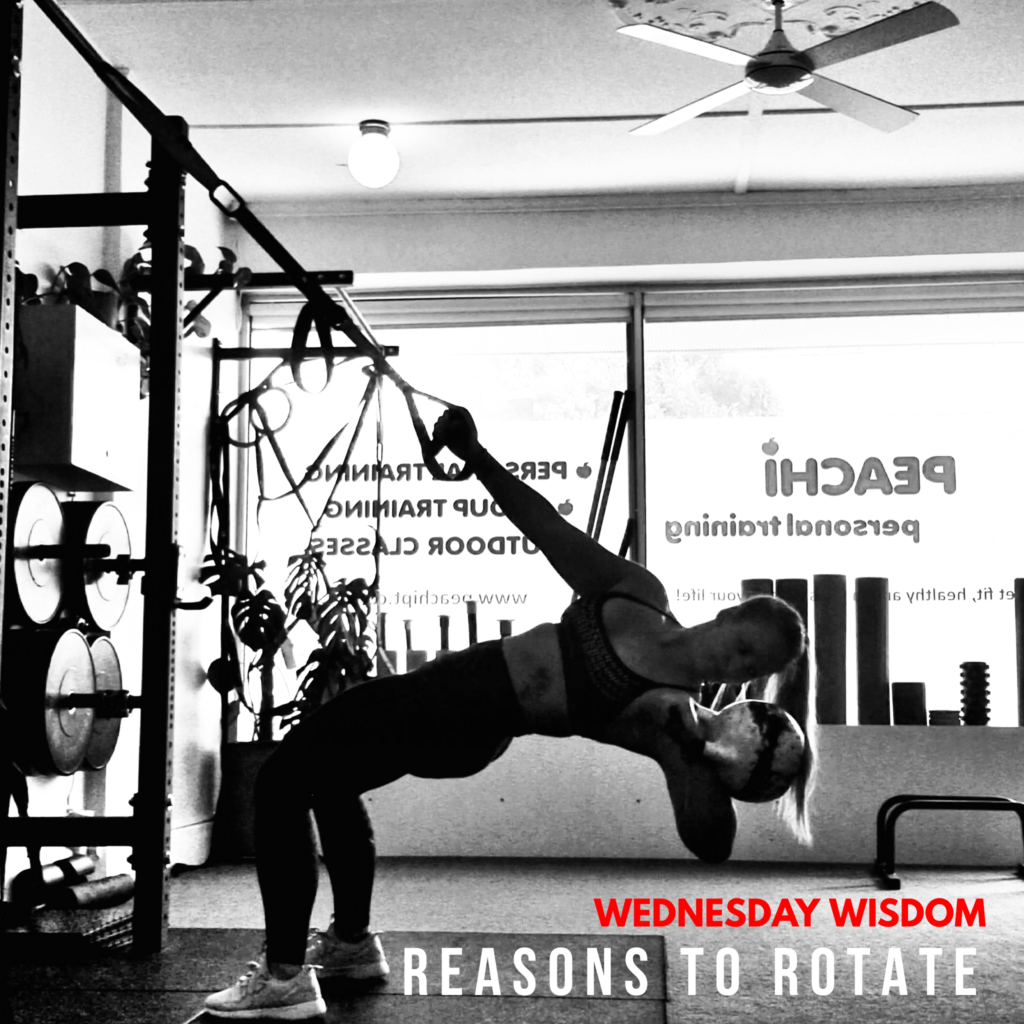In our last post we talked Programming 101 – incorporating the 7 primal movement patterns and all 3 planes of motion into your sessions (if you missed it scroll down and check it out).
When facilitating an FTI course I always ask the team to list the 7 movement patterns as established by Paul Chek, and one that is regularly forgotten is Rotation. As coaches training general population clients, rotation could be argued to be the most important movement pattern of them all, and yet it’s the one so many of us don’t consider!
**Why is rotation so important? **
Let’s consider your everyday movements…
- Reaching across to turn off your alarm clock
- Grabbing your coffee mug from the overhead cupboard
- Twisting around in your chair to talk to someone behind you
We’re only just getting started – you could do all these things before 8am – you rotate and twist your body every single day, hundreds of times without even thinking!
If we’re only training clients to be strong in regular, straight up and down movements in the sagittal plane, we’re really training them to be strong in a robotic, straight up and down kind of way, which is NOT how we, as humans, move on a day-to-day basis.
Rotation is a movement people tend to do really poorly when they haven’t built awareness and strength, causing them to compensate through other areas, which often leads to niggling pains and strains in the lower back. It is also a vital movement to incorporate to train and strengthen our core.
How do we program rotation?
There are two ways to incorporate this vital pattern into our sessions…
- Rotation and Anti-Rotation Exercises
Obviously the rotation exercises are the specific movements that focus primarily on twisting – think a Band Woodchop, Landmine Rotations, Battlerope Bullwhip Waves.
But what about anti-rotation? Those are the exercises where we are trying to resist rotating our body – think a Bird Dog, Band Paloff Press, Kettlebell Around the Worlds, 3-Point Plank.
- Progressing other movements by adding Rotation
Our go-to traditional ways to progress an exercise are to increase volume or increase weight, but we can also progress almost any exercise by adding rotation – think a Transverse Deadlift, Single-Arm Kettlebell Rotation Overhead Press, Powerbag Rotation Lunge, Kettlebell Strike Row.. you can even add a rotation at the top of a Kettlebell Rack Squat!
When you start programming creatively and adding rotation to the other movement patterns not only does it open up a whole new library of exercises and give your clients more variety, it also helps them develop much more coordination and stability in the other movement patterns so that when they go back to the traditional sagittal version of the exercise they have a boost in strength.
So what are your favourite rotation exercises to use both in your own training and in client programs?
And who would want to see more ways to add rotation into the other movement patterns??
Let us know in the comments!
For for Newsletter

